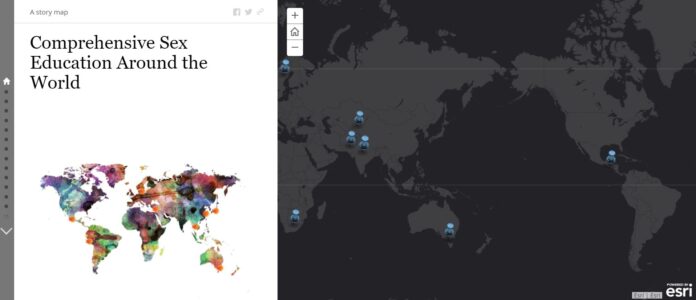This Publication addresses the following countries:
- Australia
- Guatemala
- India
- Ireland
- Kyrgyzstan
- Pakistan
- South Africa
- Sweden
Introduction:
Why is comprehensive sex education important?
Overall Context
Prevention work and Young people’s right to information and education is embodied in several international treaties and conventions. Several international agreements documenting this right include the “Convention on the Elimination of All Forms of violence against Women (CEDAW), the convention on the rights of the child (CRC), the International 14 Covenant on Economic, Social and Cultural Rights (ICESCR) and the ICPD programme on action ( IPPF European Network, 2007:16)”. This is an indication that the provision of information on sexual reproductive health to young people has been advocated for as a core element in issues of population growth and development at the international and national levels with an effort to prevent ill health.
Sexual and Reproductive Health and Rights (SRHS) is a human right recognized by UN:
- The right to sexual freedom.
- The right to sexual autonomy, sexual integrity, and safety of the sexual body.
- The right to sexual privacy.
- The right to sexual equity.
- The right to sexual pleasure.
- The right to emotional sexual expression.
- The right to sexually associate freely.
- The right to make free and responsible reproductive choices.
- The right to sexual information based upon scientific inquiry.
- The right to comprehensive sexuality education.
- The right to sexual health care.
Overall Obstacles to Sexual Health:
- Religious and traditional beliefs.
- Lack of sexual and reproductive resources and information.
- Stigmas (Taboos) around sex, pleasure, and identity.
Using a non-Western centric approach, this map explores comprehensive sexual education initiatives across the globe. By reducing our American perspective, each country is able to define its needs and standards of success within their own context.
For more specific information by country, click the link to learn more.
Source: https://www.arcgis.com/apps/MapJournal/index.html?appid=28e355da76d940988d37bd63e8bc4ded
Analysis:
I included this source because it was a fun interactive visual to start exploring various sex education norms around the world. Additionally, this resource touched on parts of the world that were not covered in the Europe and Central Asia report. This resource is relevant to the topic because it offers a summary of contextual history for the different regions along with local organizations that are trying to address sex education. This resource examines the different impacts of colonialism, religion, and cultural norms can have on different subsects of our world.





Hi Leila, I thought the map was fun and interactive. I enjoyed reading about the Sex Ed operations in other countries. I was particularly interested in the program called Catching On Everywhere. They stated that love was a part of a good Sex Ed program. I think this is really powerful, considering they even listed it first. I think this is ideology to consider more as we move forward.
This is such a great resource on comprehensive sex education. I especially like how “Catching On Early” and “Catching On Later” programs in Australia are arranged. I think it is important to prepare children for potential assaults at an early age but the question of how much they should know has always been a huge concern. I think breaking up sex education into stages is a wise choice. Besides age, breaking up things base on sexual activity and personal beliefs may also help to distribute the message to the people in need. Parents may also feel more comfortable with comprehensive sex education this way.